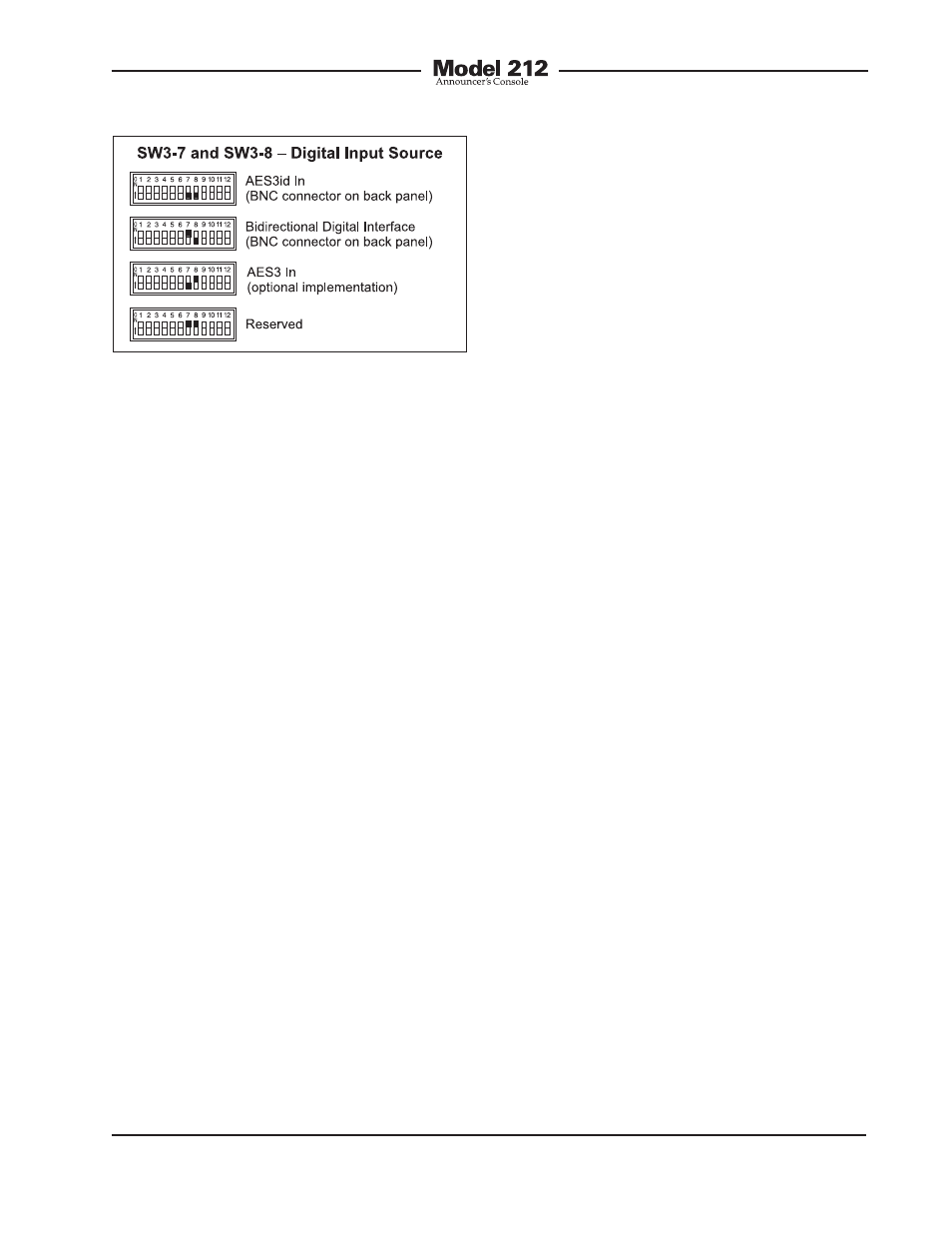Studio Technologies 212 2006 User Manual
Page 22

Issue 3, July 2006
Model 212 User Guide
Page 22
Studio Technologies, Inc.
channels of digital audio are sent in the
other. The bidirectional digital interface
uses a BNC connector which is located on
the Model 212’s back panel. The interface
is only appropriate for use in carefully en-
gineered systems that are compatible with
this type of signal. An example application
is where a Model 212 is directly interfaced
with a 75 ohm port on a Riedel digital
matrix intercom system.
AES3 input circuitry is located inside the
Model 212’s enclosure and is compatible
with balanced 110 ohm digital audio
signals. This type of signal is typically
found in non-broadcast applications
where the use of twisted pair wiring with
a maximum interconnection length of 100
meters does not pose a problem. The
Model 212 provides the AES3 input circuit-
ry for installer-selected applications where
the desired connector is mounted into one
of the spare connector locations on the
Model 212’s back panel. Many applica-
tions use standard 3-pin female XLR-type
connectors for AES3 inputs. However, us-
ing other connector types, such as Neutrik
EtherCon, can be a convenient way of
transporting a number of different signals
over “CAT5” or “CAT6” twisted-pair cable.
Incorrectly setting the digital input source
will probably prove to be the most com-
mon cause of incorrect Model 212 opera-
tion. Carefully reviewing the connected
signals and then selecting the appropriate
interface will lead to successful operation.
Relay Mode
Switches SW3-9 and SW3-10 are used
to configure the operating mode of the
auxiliary relay.
212 uses for the analog-to-digital conver-
sion and digital audio transmission func-
tions. The digital input interface choices
are AES3id In, bidirectional digital inter-
face, and AES3 In. As selecting the correct
interface is critical to proper Model 212
operation it’s worth describing each
in detail.
The AES3id input is located on the Model
212’s back panel and is compatible with
unbalanced 75 ohm digital audio signals.
This type of signal is common to broad-
cast facilities where audio and video utilize
a common cabling-type and BNC connec-
tors for signal transport. Note that many
people refer to this generically as an “AES”
digital audio signal. But this is confusing
and inaccurate as there are separate stan-
dards for 75 ohm unbalanced (AES3id)
and 110 ohm balanced (AES) digital audio
signals. (While the standards are separate,
both share the same method of formatting
the digital audio and control signals.)
The bidirectional digital interface is a
special type of 75 ohm unbalanced signal
that carries two channels of digital audio
in each direction. To clarify, over a single
unbalanced cable two channels of digital
audio are sent in one direction and two
Figure 13. Digital input source settings
